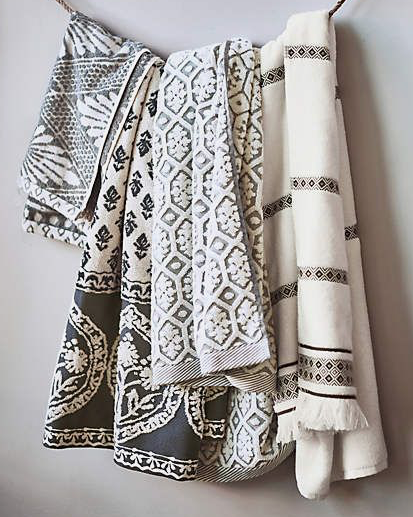. What better time to get crisp new sheets or fluffy towels than right when the weather is turning colder? But, how do you make sure that you’re choosing the best items for your needs? We’ve put together a handy cheat sheet with all of the info you need about snagging the best – and most luxurious pieces.
Everybody has their own preferences when it comes to bedding and bath linens. Some like cool and crisp, while others love a soft and satiny feel. See below for the types of keywords to look for depending upon your preferences.
Bedding
Thread Count: This is the measure of the number of horizontal and vertical threads per square inch. Typically the higher the thread count, the better the quality.
Certified Cottons: The best quality linens come in cotton. It is soft, durable and breathable. For the softest feel, look for certified cottons with 100% Egyptian being the best, followed closely by Supima (or Pima).
Percale: Is characterized by a matte finish and crisp hand. If you like having a cool side to your pillow, percale is the way to go.
Sateen: Is woven to create a silky smooth surface with a luminous sheen. It is often thicker and heavier than percale, but softer. Choose sateen if you prefer your linens soft and supple.
Linen: Is created with a subtle texture and is soft and durable. Linen sheets look a bit more casual, but feel very high end.
Organic: If you’re looking for sustainable bedding options, give Bamboo a try. It is made from sustainably harvested wood that is processed into a rayon fiber. It is extremely soft and silky.
Towels

Image: Anthropologie
Egyptian Cotton: Similar to bedding, Egyptian cotton is the creme de la creme material for towels. They are created with longer, thicker loops and are very absorbent. The only downside to Egyptian cotton is that it can take longer to dry than other materials.
Turkish: You have likely seen these boho-esque towels and wondered what they are used for. Turkish towels tend to be less plush and thinner. They are still very absorbent, but they also dry quicker than a thicker towel. This makes them great options for hand towels in the kitchen and bath.
GSM Density: Similar to a thread count, a GSM (Grams per Square Meter) number measures the density of fibers. In the lower range, 300 – 400 GSM is typically a thinner towel that dries quickly. The medium range of 400 – 600 GSM is good for a beach or bath towel. The highest tier of 600 – 900 GSM is the most dense, thick and absorbent. This will be your most luxurious and heavy towel, although it will take longer to dry.
Hopefully you’re now ready to choose your perfect linens! Click here to start shopping some of our favorites!

